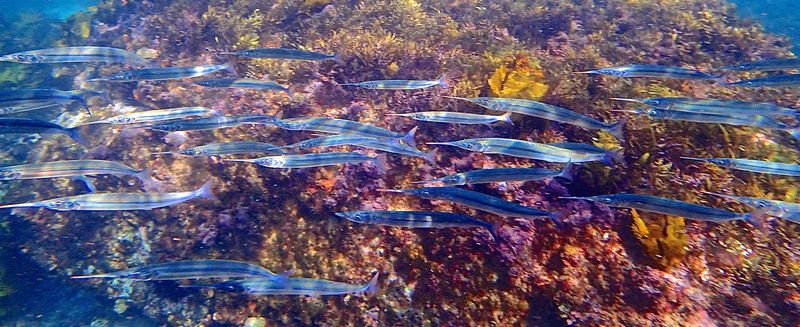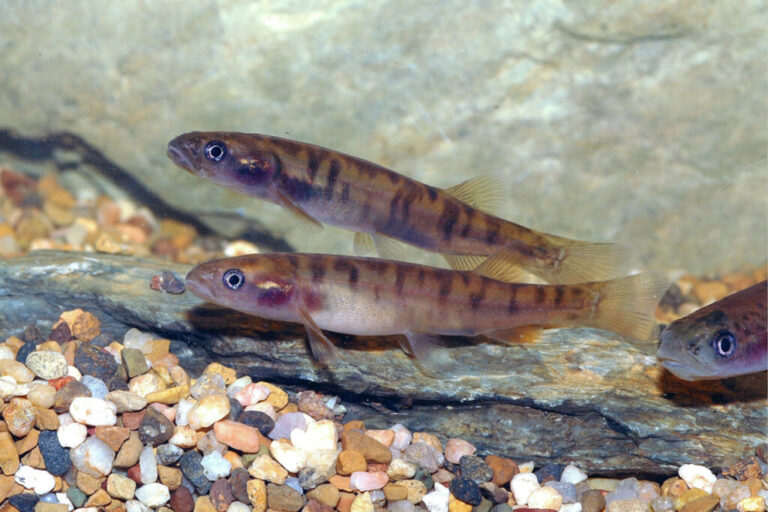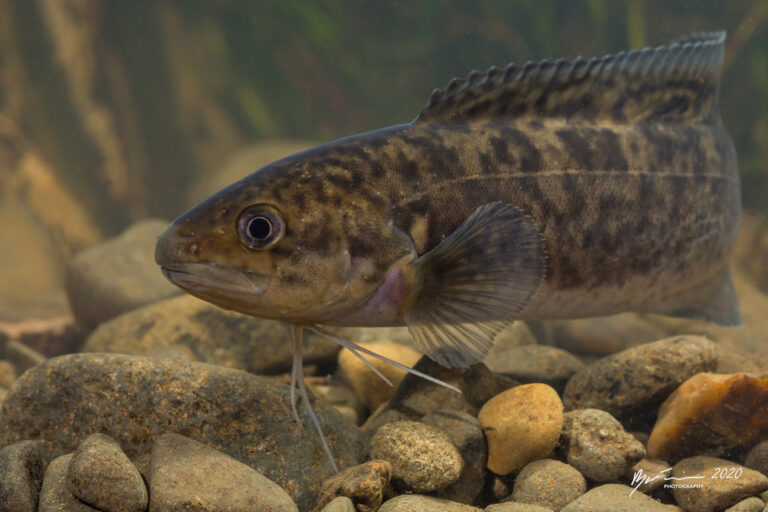At least 18 species of garfishes are known from Australian waters. They can be difficult to accurately identify so I won’t even try. Most have very elongate silvery bodies with a long lower jaw and short triangular upper jaw. The particular species of garfish that is common our area is the Eastern Sea Garfish (Hyporhamphus australis) which is found in sheltered bays, coastal waters, and occasionally in the lower reaches of estuaries from Moreton Bay in Queensland to Eden in New South Wales, including Lord Howe and Norfolk Islands.

It is a schooling species that grows to 52 cm in length. These fish are a pale, greenish blue on the back and upper sides and have a blue edged silver band along the sides. They also have three narrow brown lines along the back, above the silver band. Like billfish, they have a beak and the Eastern Sea Garfish have a red tip on the end of theirs. These fish school near the surface at night and over weed and seagrass beds during the day.
Predominantly a herbivore the Garfish feed mainly on varying species of sea grass, algal filaments and small amounts of crustaceans. They spawn in shallow sea grass beds throughout the summer months, October to March, and the juveniles can stay in the shallow inshore waters for up to 2 years. They average in size between 30-40cm in and can grow up to 50-60cm, weighing up to 600gm and are 3-4 years old by this stage of their lives.
In general the larger fish tend to turn up during mid to late winter and can be as big as 50cm and 500g in weight. Garfish can be caught anywhere around our coasts but are more easily targeted in our estuaries from late autumn through until mid-September. The best time to fish for gars is the last two hours of the run-out tide and the first couple of hours of the run-in tide. Berley is essential and garfish tend to favour areas that are shallow with good access to seagrass beds, usually areas surrounding channels in between sand bars and banks are the perfect environment where there is some broken weed beds. Here you have shallow water, plenty of seagrass and on the incoming tide some good current to carry your berley trail and keep the fish in your area. A good berley is commercial breadcrumbs that have had some tuna oil added.
Any fly rod outfit used for chasing stream trout will be ideal for casting flies to Garfish, try to stay on the lighter side around a #4 weight is more than enough for chasing Garfish. The leader set-up can be extremely basic with around 1m of 6kg for the butt and a 30cm tippet of 2-3kg. Garfish have quite abrasive mouths and it is a good idea to cut the fly off and re-tie after catching three or four fish on the fly as they eventually chafe the line until it breaks.
A small maggot fly or bread fly on a size 14 or smaller hook is all that is needed. If the garfish are high in the water column and are close to the surface then the use of a small indicator will aid in keeping your bait suspended in the strike zone generally about a foot or so under the surface.




